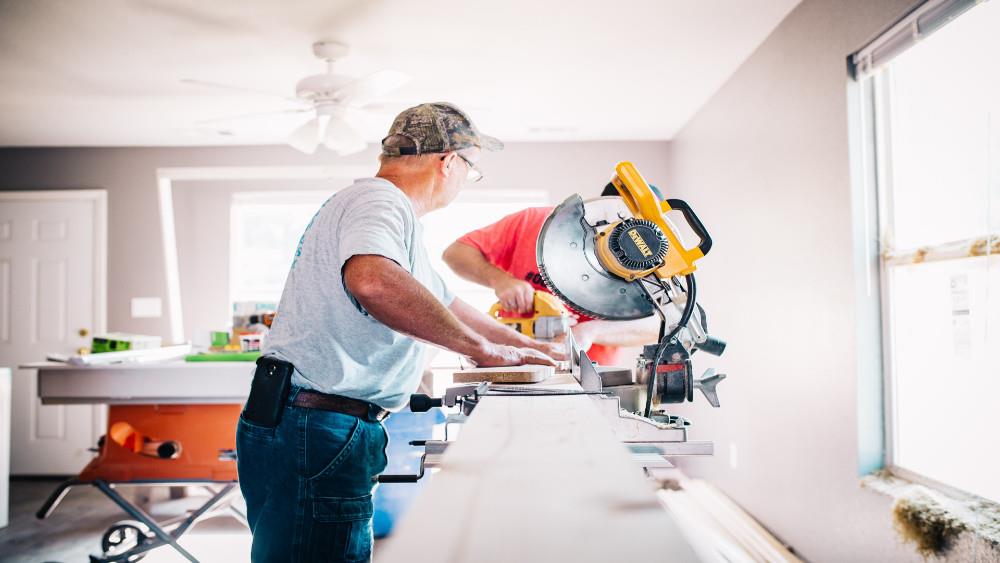

With searches for ‘soundproofing home’ going up 128% from last April to now, Johnpaul Manning, MD of Insulation4Less, offers his insights into the best ways to soundproof a home office space on a budget.
When working from home, we need all the help we can get to filter out the various distractions of neighbours and kids.
Covid-19 has brought many changes, and with so many Brits now looking at full time remote working for the future, we’re seeing an increase in customers searching for ways to soundproof their spaces.
The following soundproofing methods suggested by Insulation4Less can help you achieve the peace and quiet you need for a productive day at work.
Soundproofing is a very important aspect when it comes to keeping noise at bay. Living beside noisy areas - busy streets, airports and main roads - can start to wear you down - and this can be further exacerbated by internal noises throughout the home, for example if kids aren't in school over the summer holidays. Luckily, there are plenty of budget-friendly ways to soundproof your space.
First, it helps to understand some basic things about sound. Sound is made up of certain low-frequency waves which are quite like radio waves. These waves tend to keep travelling in all directions of space until and unless they meet some form of opposition. Sound waves also have a tendency of bouncing off the surfaces which offer resistance which creates some form of reverberation in the room. Tackle this by stopping the way sound moves around the room first.
Create mass in the room to absorb sound
When heavy items are placed within a space, they tend to absorb the sound, creating less noise. You can add layers of insulation by pushing bookshelves and wardrobes against walls that face the street.
Add rugs and canvas paintings to stop sound vibrations
Any texture you can add to the floor and walls helps too - rugs are a must, and large canvas paintings also make a surprisingly effective way of cancelling noise. If you’re really on a budget, hang blankets on the walls.
Invest in ambient noise machines
If you haven’t got the ability to move furniture around, you could look to invest in an ambient noise machine instead. You can get these for relatively cheap on Amazon - white noise, jungle and whale sounds - are a great way to overpower the irritating noises of the outside world - and help you get into the zone for working.
Use weatherstriping to seal noise gaps
Weatherstripping is typically used to block draughts and cold air, but it can also be used to block sound too. And you’d be surprised at just how much sound comes through small gaps. Weatherstripping tape where the windows and doors touch the frame can really make a big difference.
Make your own soundproof panels
You can buy soundproofing foam online fairly cheap - put these on your walls. These trap sound rather than block it, transforming the sound wave into heat and reducing reverberation.
If you're really on a budget, save your cardboard egg cups and hang them on the walls. These will send sound flying back in alternate directions away from you.”
Make space to swallow the sound
Sound travels and the more space, the more sound will need to travel. Sound due to its low-frequency nature tends to get less and less powerful as it travels through a large space and this leads to the noise becoming less loud.”
Make window plugs
Window plugs are made out of one to two inch soundproofing mats which are inserted across the window frames. These plugs tend to form a very tight sound barrier avoiding any kind of gap, which might be left behind.
Buy double or triple paned windows
“Windows by default are the source where noise travels through, most of the time. Many homes have single-pane windows which might be installed on a wooden frame. These are not good when it comes to offering noise insulation. But there’s a few things you can do to improve the windows in your home office, if you have cash to spend.
Windows which are double-paned, come with an acrylic frame which helps keep the noise at bay. Double or triple-paned windows typically have an STC rating between 28 to 35. It can easily be said that these panes are more effective to their single-paned counterparts, reducing the sound almost by 20%. Add to that the acrylic frames, and the sound reduction capability goes up to 50%.
Add drywall to create sound resistance
Noise can easily pass through walls which are thin drywall. If your office space has thin walls, there’s a few things you can try to help.
By adding additional layers of the drywall to the existing wall, you can improve the resistance to sound. The thicker the size of the drywall, the more resistance to sound it has on offer.https://insulation4less.co.uk